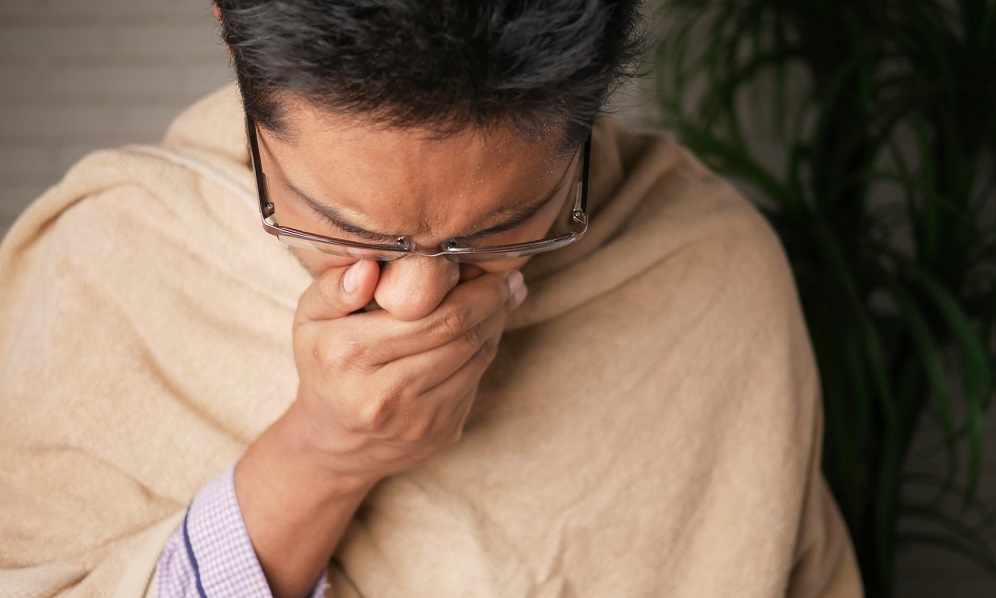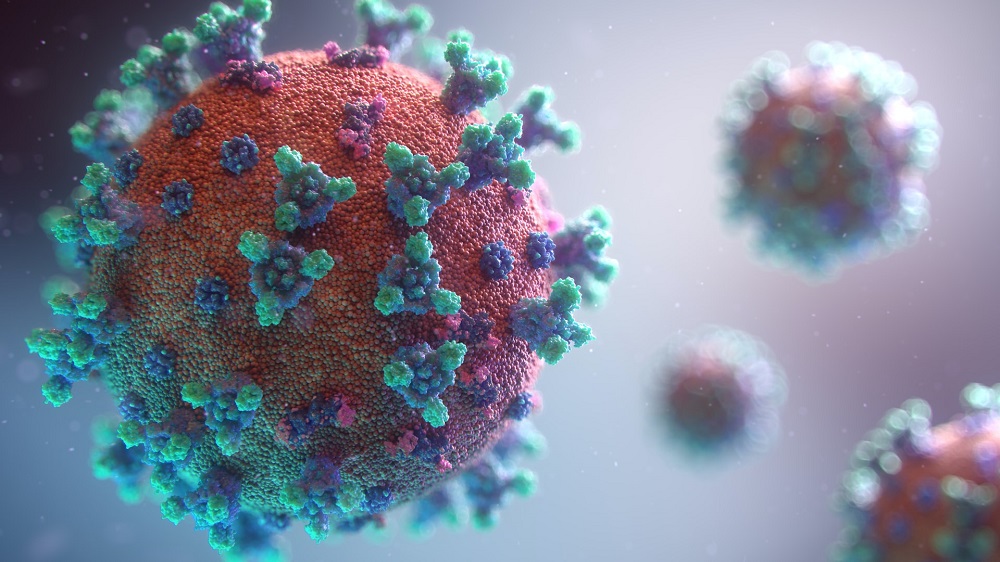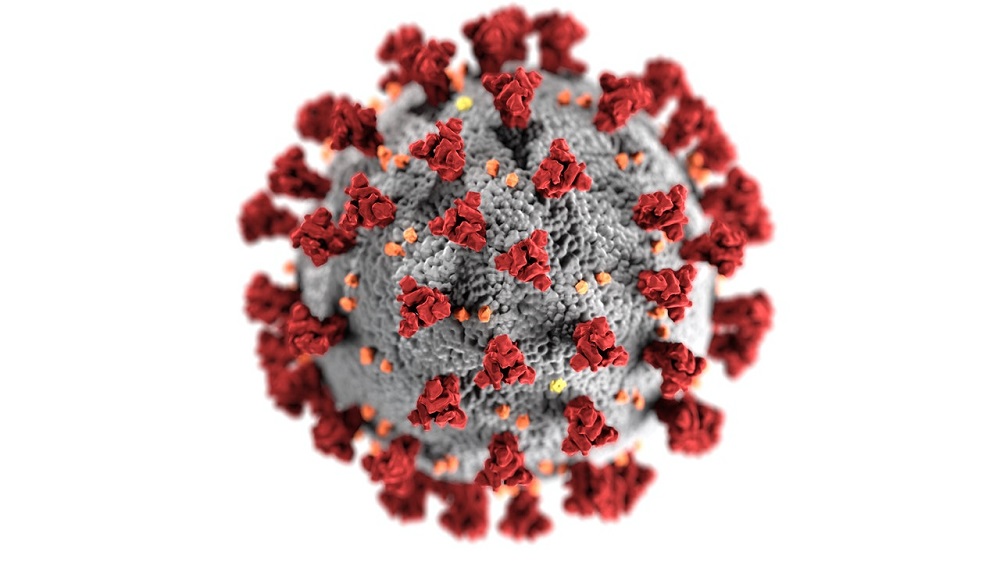Before the COVID-19 pandemic, summer was fondly thought of as the season when sniffles were few and far between. For those few months, we could reliably expect a break from _most_ cold-like illnesses, as flu and colds seemed to consistently strike in the winter - a season when we are more susceptible to infection by various respiratory viruses.
If you’ve had COVID-19 or know someone who has had it, you are likely familiar with this illness timeline: Wake up feeling crummy...Wonder if you’re sick...Check your temperature (oh no, a fever!)...Make an appointment for testing (or buy an at home test)...Get tested...BOOM! Positive for COVID-19. You likely know that your positive COVID-19 test result (if done by a healthcare professional) is reported to your local health department, which allows them to monitor the disease’s trends, like in this graph below:
By this point, we know that COVID-19 can cause almost any symptom under the sun, from cough to fatigue to stomachache. Since COVID-19 symptoms often appear similar to those of the common cold, flu, and other contagious illnesses, a test is necessary to confirm diagnosis. However, **there is one symptom that is fairly unique to COVID: the loss of taste or smell**.
In regions where BA.2 prevalence is rising, Kinsa’s data shows a higher incidence of respiratory symptoms like runny nose and cough among adults. This subvariant now makes up the majority of COVID cases sequenced nationwide, but that proportion varies regionally, from about 93% in the New York/New Jersey region down to 73% in the Great Plains. We expect that as BA.2 increasingly predominates, cases will also increase, since this subvariant appears to be more transmissible than the original Omicron variant.
t’s been one week since the C.D.C. loosened its mask guidelines. Kinsa’s data shows that national respiratory illness activity is slightly decreasing, and remains below normal seasonal illness levels. Our data also shows that national respiratory illness activity among children 0-12 (which was increasing last week) has started to decrease, likely driving national illness levels down overall. As mask mandates are lifted in schools across the country, we’re closely monitoring illness activity in school-aged kids.
After a brief plateau of national illness activity, Kinsa’s data now shows that over the past seven days, respiratory illness activity (cough, sore throat, fever) has started to increase in the Northeast, Midwest, and West, and South, largely driven by the pediatric population. The increased activity among kids is likely a result of several circulating respiratory illnesses like the common cold and RSV.
First…an update after the big game: Kinsa’s data isn’t showing any significant signs of increased illness activity in California where spectators gathered to watch in person. Note, attendees over 5 years old were required to show proof of vaccination or a negative PCR test within 48 hours (or negative antigen (rapid) test within 24 hours) of the game. In addition to fans flooding LA to spectate, people around the country also gathered to watch the game at home, so we’ll continue to keep an eye on illness levels over the next week to see what happens with activity across the country following this event.
Last week, we reported that national respiratory illness activity (fever, cough, and sore throat) decreased and is below pre-COVID seasonal illness levels (“normal seasonal levels”), which remains true this week across all age groups. When taking a closer look at the senior population (65-100 years old), Kinsa’s data shows an interesting trend: all age groups, including seniors, experienced a rapid increase in fever incidence in mid-December, likely due to the Omicron surge.
After a very tough month and a half, we’re seeing relief across the country. Kinsa’s data shows decreased illness levels across all regions of the US, even in areas where Omicron more recently peaked, like the South and the West. While case counts still remain higher than other waves during the pandemic, the worst of the Omicron surge seems to be behind us.
Good news: _nationally_, the wave of COVID cases fueled by the Omicron variant has peaked. But, trends vary vastly across regions. Kinsa data continues to show relief in the Northeast, which was hit hard by the Omicron surge in December. On the flip side, COVID cases remain record-high and increasing in much of the South and the West (WI, SC, UT, and AK in particular), where the Omicron wave hit later on. With parts of the country peaking, newly reported COVID-19 cases in the US started to decrease over the past week, but deaths will lag and unfortunately continue to increase.
After more than a month of unrelenting increases in COVID-19 cases, some regions appear to be passing over the peak. Kinsa data shows that fever incidence in the Northeast began to decrease around the beginning of January, signaling illness is on the decline. Reports of cough, runny nose and sore throat also began to fall this week. Washington D.C., one of the regions hit earliest in the Omicron wave, has already seen the average number of cases decrease every day this week.
This year’s illness season is here, as COVID, flu and cold grip the nation. For the first time since the pandemic began, every state in the country is simultaneously at “Critical” COVID risk, according to HealthWeather. Beginning just before Christmas, Kinsa data showed fevers accelerating upward, with the number of fevers nationwide quadrupling during December. The same trend continued into the new year as Omicron swept the nation, flu bubbled up regionally, and the viruses that cause the common cold spread.
According to Kinsa’s data, for the first time since October, more than half of the states are at either high or critical COVID risk. Risk levels are determined by a combination of the current number of cases and the Kinsa COVID-19 forecast. As the nation tops 800,000 deaths due to COVID-19, cases are running up too — there are currently around 125,000 new cases per day, an increase of 31 percent over the last two weeks. Some states, like New Hampshire and Maine, have more cases now than at any point in the pandemic.
With data anomalies caused by reporting delays and behavioral changes over the holidays now in our rearview, Thanksgiving’s impact on the country’s health is coming into focus — and it doesn’t look great. Kinsa data shows overall levels of fevers were increasing before the holiday, then dipped dramatically beginning on November 24 as people spent time with family, traveled, and otherwise didn’t spend much time taking their temperatures. Since then, the number of fevers across the country has shot up well above pre-Thanksgiving levels.
While flu levels are increasing nationally, they remain relatively low with some exceptions. For instance, Kinsa’s data shows cough, runny nose and G.I symptoms are above expected levels for this time of year in the South, one of the areas in the country also experiencing an uptick in verified flu cases. Also, as we’ve previously discussed, there have been numerous reports of influenza outbreaks on and around college campuses
Last week, we dug into the rising flu levels in the South, particularly in Florida. While those trends continue into this week, Kinsa’s data also shows G.I. symptoms like nausea, diarrhea and vomiting are increasing in southern states. Illnesses that cause G.I. distress have been relatively low since the pandemic began — likely as a result of social distancing and masking. As people begin gathering for the holidays, we expect to see an uptick in illness, potentially including those that cause G.I. distress.
Just as we started to get comfy, the ever-changing 14-day average of daily COVID-19 cases flipped from negative to positive this week. Cases are increasing in 25 states, and the overall case numbers are hovering around 74,000 cases per day. The magnitude of this wave will depend on vaccination rates as well as the number of previous infections. Some areas that were spared earlier in the Delta surge are now being hit harder.
Respiratory symptoms like cough and runny noses are on the rise in states west of Colorado, Kinsa data show, despite those symptoms waning in the rest of the country. California, Nevada, and Utah show signs of increased RSV activity, and Nevada is also showing some signs of increased flu activity. Many of these states also show an increase in the number of fevers compared to this time of year in a typical illness season. Like we discussed last week, nationally, fevers are lower than expected for this time of year.
Fevers - a hallmark sign of infectious illness - typically increase this time of year. Yet this year, they aren't. During a normal illness season, fevers hit their lowest levels in mid-summer. Starting in August, when schools return to session, fevers tick up again before peaking around the winter holidays, and slowly receding during the spring. This year, however, fevers began rising abnormally early, in the summer, peaking at the end of August.
After rising unabated for the last three months, the average number of daily deaths due to COVID-19 is finally decreasing again. While around 1,800 people are still lost to the virus each day, trends suggest the COVID-19 death rate will continue to fall. The surge in deaths caused by the Delta variant topped out at just under 2,100 deaths per day, nearly the same as the peak during the first wave of the pandemic in April 2020. The 2020-21 holiday outbreak continues to be the most deadly period of the pandemic for the US when the country topped out at around 3,400 daily deaths.


























